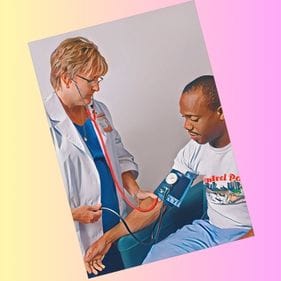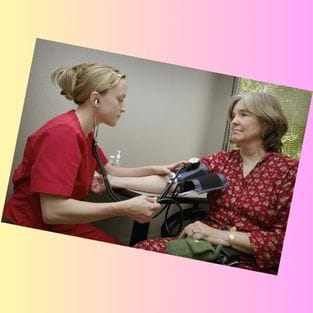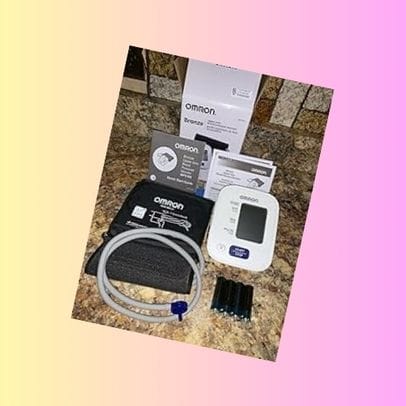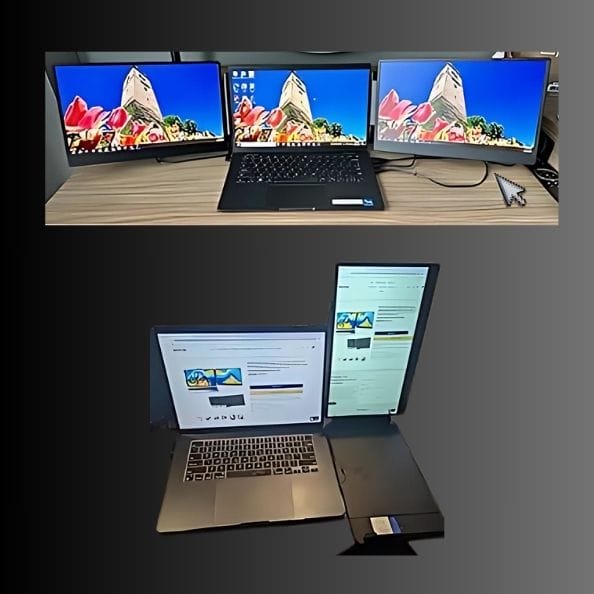Monitoring your blood pressure is a critical aspect of maintaining heart health, and with the right tools, it can be done easily and accurately at home.
The blood pressure cuff for the upper arm is one such indispensable tool. This post will walk you through everything you need to know about selecting and using an upper arm blood pressure cuff.
Key Takeaways:
- Understanding the importance of accurate blood pressure monitoring and the role of upper arm cuffs.
- Features to consider when choosing the best blood pressure cuff for your needs.
- Tips for accurate measurement and maintenance of your blood pressure cuff.
What is a Blood Pressure Cuff for the Upper Arm?
A blood pressure cuff for the upper arm, traditionally known as a sphygmomanometer, is a device used to measure blood pressure. It consists of an inflatable cuff to restrict blood flow, a measuring unit to display the pressure, and often a mechanism for inflation which may be manual or automatic.

*The upper arm cuff is widely recognized for providing more accurate readings compared to wrist or finger monitors, as it measures the pressure in a larger artery.
Why Upper Arm Cuffs Are Preferred
Upper-arm blood pressure cuffs are preferred by medical professionals due to their reliability and accuracy.
*The brachial artery, located in the upper arm, is closer in size and position to the aorta, providing a more direct measurement of the pressure exerted by the heart.
This is why upper arm cuffs are often used in clinical settings and recommended for home monitoring.
Choosing the Right Blood Pressure Cuff
When selecting a blood pressure cuff for the upper arm, it's important to consider the cuff size. An improperly sized cuff can result in inaccurate readings. Most cuffs come with a size guide or a range indicator to ensure a proper fit.
*Additionally, look for cuffs that have been validated for accuracy by reputable organizations.
Key Features to Look For
Other features to look for include
- ease of use,
- display readability,
- memory function for tracking readings over time, and
- connectivity options for sharing data with your healthcare provider.
*Some cuffs also offer multi-user capabilities, which is beneficial for households with more than one person monitoring their blood pressure.
How to Use Your Blood Pressure Cuff Correctly
For the most accurate readings, it's essential to use your blood pressure cuff correctly.

- Ensure that you are seated comfortably with your back supported, legs uncrossed, and your arm at heart level.
- The cuff should be placed on bare skin, not over clothing, and the room should be quiet and warm.
Common Mistakes to Avoid
Avoid common mistakes such as
- talking or moving during the measurement,
- using a cuff over clothing, or
- measuring immediately after physical activity or a meal.
These can all affect the accuracy of your reading.
*It's also advisable to take multiple readings and record them to monitor any changes over time.
The Role of Technology in Blood Pressure Monitoring
Advancements in technology have made blood pressure monitoring more user-friendly and accessible.

*Many modern upper arm cuffs come with digital displays and features such as Bluetooth connectivity, allowing users to track and share their data via smartphone apps.
Smart Features and Apps
These smart features can help users to better understand their health patterns and share important information with their healthcare providers.
Some apps also provide reminders to take your blood pressure, which can be particularly useful for those who need to monitor their levels regularly.
Maintaining Your Blood Pressure Cuff
To ensure the longevity and accuracy of your blood pressure cuff, regular maintenance is necessary. This includes
- keeping the device clean,
- storing it properly, and
- checking it periodically for any signs of wear or damage.
*Always refer to the manufacturer's instructions for specific maintenance guidelines.
Calibration and Accuracy
It's also important to have your blood pressure cuff calibrated regularly, as recommended by the manufacturer ... This ensures that the device continues to provide accurate readings.
*If you notice any discrepancies or changes in your readings, it's a good idea to have the device checked by a professional.
The Impact of Blood Pressure on Overall Health
Monitoring your blood pressure is not just about numbers; it's about understanding and managing your overall health.
High blood pressure, or hypertension, can lead to serious health issues such as heart disease, stroke, and kidney damage.
*Regular monitoring can help detect hypertension early and allow for timely intervention.
Preventative Health Measures
In addition to monitoring blood pressure, adopting a healthy lifestyle can significantly impact your cardiovascular health.
*This includes maintaining a balanced diet, engaging in regular physical activity, managing stress, and avoiding tobacco and excessive alcohol consumption.
When to Consult a Healthcare Professional
If you consistently receive high readings on your blood pressure cuff, it's important to consult a healthcare professional.
They can help determine if you have hypertension and advise on the best course of action.
*Remember, a blood pressure cuff is simply a monitoring tool and not a substitute for professional medical advice.
Understanding Blood Pressure Readings
Understanding your blood pressure readings is crucial.
The systolic pressure (the higher number) indicates the pressure in your arteries when your heart beats, while the diastolic pressure (the lower number) represents the pressure between beats.
Your healthcare provider can help you understand what your specific readings mean for your health.
FAQ Section
Q: How often should I check my blood pressure at home?
A: The frequency of home blood pressure monitoring should be based on your healthcare provider's recommendation.
This may vary depending on your health status and whether you have been diagnosed with hypertension.
Q: Can I use an upper arm blood pressure cuff if I have a large arm?
A: Yes, many manufacturers offer large-sized cuffs to accommodate larger arms. It's important to use a cuff that fits properly for accurate readings.
Q: How do I know if my blood pressure cuff is accurate?
A: To ensure accuracy, choose a cuff that has been validated by reputable organizations, follow the manufacturer's instructions for use and maintenance, and have the device calibrated regularly.
If you're unsure about your readings, compare them with those taken by a healthcare professional.
Your Takeaway
Choosing and using a blood pressure cuff for the upper arm is a straightforward process that can have a significant impact on your health.
By selecting the right cuff, using it correctly, and maintaining it properly, you can ensure accurate readings and better manage your cardiovascular health.
*Remember to consult with a healthcare professional if you have concerns about your blood pressure readings.
Disclaimer.
When you purchase through links on our site, we may earn an affiliate commission (that's how we stay in business). FirstFewFinds may use affiliate links to products and services on retailer sites for which we can receive compensation if you click on those links or make purchases through them.
We hope you find the list of our first few finds useful and helpful. Each product on our list has been carefully chosen by our writers and all opinions are our own. Check your choices and enjoy finding exactly what you need!








